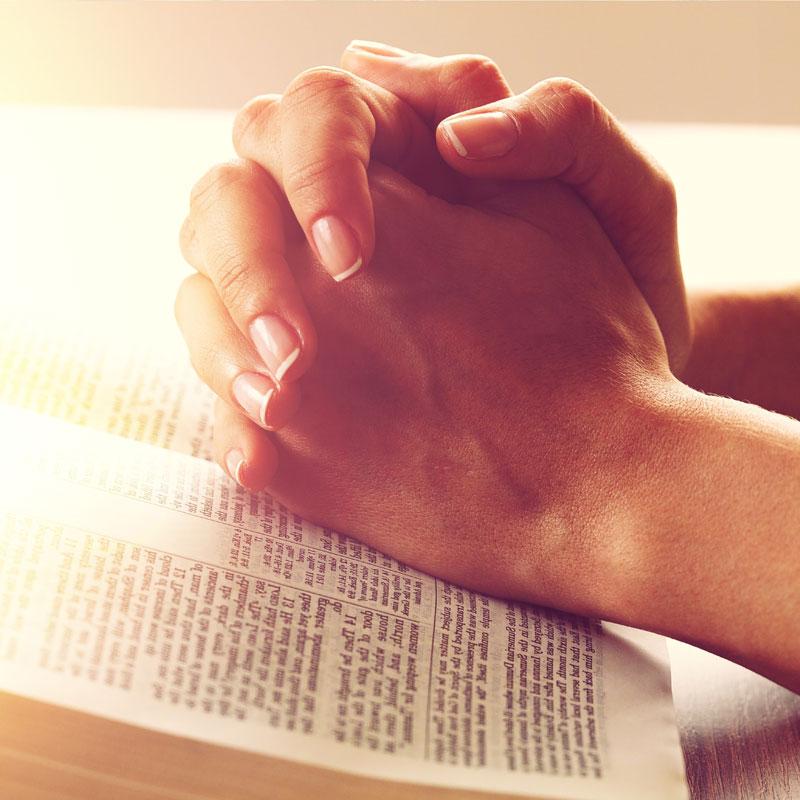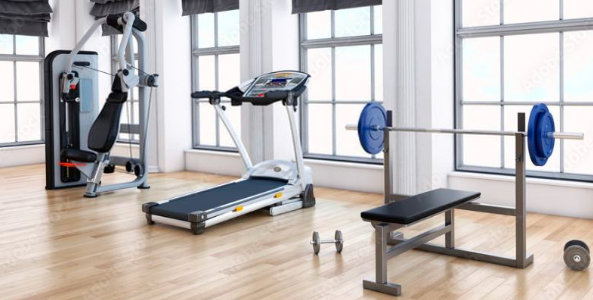High school students, law has the criticism of religions and forms of disputes of secularism at school
Halal menus, separate toilets, challenges of courses ...
What is the extent of forms of religious separatism at the School?
Tablées, toilets or taps separated according to the religion of the students, courses on gender equality disputed in the name of religion, refusal to give hands to a comrade, requests of menus in accordance with confessional standards ... UnlikeRealized ideas, the law prohibiting religious signs at the School (2004) does not prevent tensions born from various forms of identity affirmation affecting the content of the courses as well as the organization of other aspects of school life (Ex: canteen, school outings ...). Or, alors que les premiers travaux mettant en exergue ces problèmes remontent à près d’une vingtaine d’années[1], les données permettant de mesurer précisément cette poussée du religieux à l’Ecole manquent encore cruellement : la majorité des académies estimant que les différentes voies de signalement existantes (ex : VALEREP) ne donnent qu’une vision “très incomplète de la réalité des atteintes au principe de laïcité en milieu scolaire”[2].
In order to better understand the extent of the identity tensions and the refusal of educational activities that these religious demands provoke in school environment, the Licra and its DVD magazine have commanded the Ifop an investigation to assess to what extent high school students are confrontedin their schooling at these sprains at the principle of religious neutrality.For this, IFOP has a implementation a study system based on a representative sample of a thousand high school students which allows, among other things, to assess the role that certain social or school contexts can play on the subjectBeing in a "poor" suburb or a high school classified "priority" (according to the OZP).
In view of this study, it is clear that the identitaro-religious manifestations which affect school life are far from being a marginal phenomenon: more than half of the students enrolled in the second cycle of the second degree have already been exposed to theless once and their exposure to these problems is even more massive in the marked establishments of the seal of social or school relegation.These young people, and in particular Muslim high school students and/or educated in high schools classified as "priority", are also distinguished by a strong attachment to "respect" of religions and therefore by a strong reluctance to any form of irreverence towards dogmas andreligious figures.
The ten key figures for the survey
- Plus d’un lycéen sur deux (55%) a déjà été confronté à une forme d’expression du fait religieux en milieu scolaire, les plus répandues étant les demandes de menus « confessionnels » (47%), les refus d’activités pédagogiques des jeunes filles au nom de leur religion – 31% pour des cours de natation et 26% pour des cours d’EPS mais aussi un rejet des références religieuses de certaines activités pédagogiques (24% de refus d’entrer dans un édifice religieux) ou des moments de vie scolaire (27% de contestations des repas de Noël).
- D’autres expressions des identités religieuses illustrent une forme de “séparatisme” d’une partie des élèves ou, du moins, une volonté d’entre-soi durant certains moments de vie scolaire.Indeed, 16% of public high school students have already noted the organization at the canteen of tables according to religion (33% in high schools classified as "priority"), 15% of WC separated according to their religion (30%in “priority” environment) and 13% the tap institution reserved for students according to confession (32% in “priority” environment).
- In general, high schools located in sensitive suburbs seem particularly exposed to these forms of expressions of "religious": 63% of high school students registered in a classified "priority" establishment have already observed during their schooling.And the difference in exposure with other establishments is often significant as for example for the refusals to give hands to a comrade, reported by 46% of high school students in "priority" against only 15% in other establishments.
- Près d’un lycéen sur deux du secteur public (48%) rapporte avoir aussi déjà observé des élèves contester le contenu même des enseignements au nom de leurs convictions religieuses.And there are not really any lessons that are much more affected than the others: around three in ten high school students have already noted during an EMC lesson (34%) or evoking secularism (30%), duringof courses on matters related to diversity (32%) or devoted to equality of girls-boys (31%) or during physical education and sports lessons (29%).
- Là-aussi, ces tendances nationales affectent plus lourdement les espaces de relégation sociale et scolaire.Thus, students enrolled in an establishment classified as "priority" (according to the OZP) are much more numerous (74%) than the others (44%) to have already observed at least one form of contestation of a course. Cette surexposition se retrouve notamment dans la contestation des cours portant sur la mixité filles-garçons (rapportés par 51% des élèves en milieu « prioritaire) ou les cours d’éducation sexuelle (58% en milieu « prioritaire »).
- Dans leur ensemble, ces différentes formes de contestation des cours au nom de la religion ne sont soutenues que par une minorité de lycéens : seuls 21% des lycéens ont déjà partagé personnellement le fond de ces revendications identitaires. Cependant, certaines fractions de la population lycéenne partagent beaucoup le point de vue des élèves à l’origine de ces contestations, au premier rang desquels les élèves musulmans (49%), ceux appartenant à une minorité ethnique[3] (49%) ou inscrits dans un établissement classé « prioritaire » (53%).
- De même, si les différentes formes d’expression du religieux pouvant affecter la vie scolaire ne sont soutenues que par un lycéen sur quatre (26%), elles le sont dans des proportions beaucoup plus fortes par les élèves musulmans (40%), « non-blancs » (49%) ou inscrits dans un lycée « prioritaire » (53%). Ces revendications semblent bien le produit d’une demande sociale qui s’exprime partout mais particulièrement dans les quartiers socialement défavorisés caractérisés par une faible mixité sociale et culturelle.
- Le soutien de ces élèves à ces expressions de religiosité en milieu scolaire tient sans doute beaucoup au « respect » qu’ils accordent aux religions. L’idée selon laquelle « les règles édictées par leur religion sont plus importantes que les lois de la République » est par exemple beaucoup plus partagée par les lycéens (43%) que les adultes (20%) : les élèves musulmans se distinguant eux-mêmes des autres élèves par un niveau d’adhésion massif à cette idée (65%).
- Ce clivage entre jeunes et moins jeunes d’une part, et entre les jeunes musulmans et le reste de la jeunesse d’autre part, se retrouve dans le soutien plus fort que les lycéens (39%, contre 18% des Français adeptes d’une religion) apportent à l’idée selon laquelle leur « religion est la seule vraie religion, sachant que là aussi, les élèves musulmans se distinguent en partageant très largement ce point de vue (65%, contre seulement 27% des catholiques).
- Enfin, la question du droit à la critique des religions à l’Ecole met encore plus en exergue le fossé existant entre les élèves musulmans et les autres sur ces sujets. En effet, alors que la majorité des lycéens (61%) soutiennent le droit des enseignants à « montrer (…) des caricatures se moquant des religions afin d’illustrer les formes de liberté d’expression », ce n’est le cas que de 19% des musulmans. La plupart (81%) désapprouvent ce genre de pratique, au point qu’un sur quatre (25%) ne « condamnent pas totalement » l’assassin de Samuel Paty.
Complete analysis of the survey

1 - damage to the principle of particularly widespread secularism, especially in popular suburbs
Au regard des résultats de cette étude, les incidents relevés dans le rapport de l’Inspection générale de 2004 et récemment actualisés dans un essai paru en 2020[7] sont loin d’être « anecdotiques ».On the contrary, they concern a significant proportion of the high school population, even very majority in priority education.
More than one in two high school students (55%) has already faced a form of expression of the religious fact in schools, the most widespread being the requests for "confessional" menus (47%), the refusals of educational activitiesYoung girls in the name of their religion - 31% for swimming lessons and 26% for EPS courses, but also a rejection of religious references of certain educational activities (24% refusal to enter a religious building)or moments of school life (27% disputes of Christmas meals).
Other expressions of religious identities illustrate in part of the students a desire for separate school life.Indeed, 16% of public high school students have already noted the organization at the canteen of tables according to religion (33% in high schools classified as "priority"), 15% of WC separated according to their religion (30%in “priority” environment) and 13% the tap institution reserved for students according to confession (32% in “priority” environment).
In general, high schools located in sensitive suburbs seem particularly exposed to these forms of expressions of "religious": 63% of high school students registered in a classified "priority" establishment have already observed during their schooling.And the difference in exposure with other establishments is often significant as for example for the refusals to give hands to a comrade, reported by 46% of high school students in "priority" against only 15% in other establishments.
2 - an "pushing of the religious" who interferes even in the content of the courses
If these forms of religious expression can affect the various aspects of school life, this "push of the religious" (Iannis Roder) also results in a questioning of the very content of the lessons.
Thus, almost one high school student out of two in the public sector (48%) reports that they have already observed during their schooling in contested education content in the name of religious convictions.And there are not really any lessons that are much more affected than the others: around three in ten high school students have already noted during an EMC lesson (34%) or evoking secularism (30%), duringof courses on matters related to diversity (32%) or devoted to equality of girls-boys (31%) or during physical education and sports lessons (29%).In addition, the same proportion of students from the public has already seen it in history-geography (30%) or SVT (29%) courses (29%).Only artistic education courses (22%) seem to be a little less the subject of altercations in the name of religion.
But beyond trends concerning the entire metropolitan territory, it is very important to note that these problems particularly affect certain spaces of social and school relegation.Thus, students enrolled in an establishment classified as "priority" (according to the OZP) are much more numerous (74%) than the others (44%) to have already observed at least one form of contestation of a course.
As a whole, these different forms of contesting the courses in the name of religion are only supported by a minority of high school students: only 21% of high school students have already supported one of these identity claims at least.However, certain fractions of the high school population strongly share the point of view of the students behind these disputes, at the forefront of which Muslim students (49%), belonging to an ethnic minority (49%) or registered in an establishmentclassified "priority" (53%).
3 - "Touche not to my God" ... high school students much more orthodox than their elders in their relationship to religion
The support of these students to these expressions of religiosity in schools undoubtedly derives a lot from the particular conception that they have religions.The analysis of the report of high school students to religion in society in general and to the school in particular highlights a double cleavage: that between young people and the rest of the French on the one hand, that between young Muslims andthe rest of the youth on the other hand.
Asked about their relationship to religion, high school students are twice as numerous (40%) as all French people (23%) to estimate that "the rules laid down by their religion are more important than the laws of theRepublic ", knowing that their position on the subject is" pulled up "by the responses of Muslims who adhere to them, mostly (65%).This particular position of Muslims on these questions undoubtedly derives from the much more orthodox relationship they have with religion, young Muslims distinguished themselves by their increased capacity to comply with the injunctions of religion to which they are culturally attached.
But this orthopraxis is far from being a specificity of Muslims: a high proportion of students enrolled in high schools classified as "priority" (76%), perceived as "non-white" (60%) or living in popular suburbs (55%) also mainly share their point of view on the hierarchy between civil and religious standards. D’après Olivier Galland, il faut peut-être y voir le fruit d’un « phénomène d’acculturation leur faisant rejoindre les opinions de leurs camarades musulmans lorsque ceux-ci sont très représentés dans l’espace scolaire » [8].
This hiatus between high school students and the rest of the population is found in the stronger support they bring to the idea that their "religion is the only true religion": 39% of high school students share this idea, against barely 18%adults with a confession.And there too, Muslim students are distinguished by sharing this point of view in a much stronger proportion (65%) than in Catholics (27%).
4 - A criticism of religions in the school space that does not pass among Muslim students
In this popular youth very attached to religious precepts and to the notion of "respect", there is also a lesser acceptance of forms of irreverence towards religious dogmas to the point of translating into a less firm condemnation of violence violence.
In general, the choice - adopted by Samuel Paty - to present drawings mocking religions is less supported by high school students (61%) than by all French people (73%).But this question of the right to criticism of religions in the school enclosure highlights above all the existing gap on this plan between Muslims and the rest of this youth educated in the second degree.Indeed, while most high school students consider mainly "justified that teachers can show their students (...) caricatures mocking religions in order to illustrate the forms of freedom of expression", this is not the caseYoung Muslims who oppose it massively (81%).
Likewise, if the vast majority of high school students "condemn completely" (87%) the assassination of Samuel Paty, the radical disapproval of this murder is less unanimous among Muslim students: 9% of them "condemnThe assassin but share some of his motivations ", 9% say they are indifferent to him and 4%" do not condemn him ".In total, a quarter of Muslim students therefore do not express a total conviction of the Samuel Paty assassin, twice (25%) that what is observed on average in all high school students (13%).But this indifference with regard to the professor's murder also derives a lot from the school context in which students study: high school students who do not condemn their assassination (8% on average) being particularly overrepresented in priority education (21%) andAmong students with the feeling of being in a "bad high school" (31%).
François Kraus, director of the IFOP "Politics / News" pole
Methodology
IFOP study for Licra and the right to live online from January 15 to 20, 2021 with a national representative sample of 1,006 high school students aged 15 and over.The representativeness of the sample has been ensured by the quota method (sex, age, type of education, sector and level, sector, academy, religious affiliation) from statistics from the Ministry of Education (Rers 2020)and those of the Montaigne Institute.
[1] See in particular the pioneering works on the subject coordinated by Georges Bensoussan (Les Territoires lost de la République, 2002) and Jean-Pierre Obin (signs and manifestations of religious affiliation in schools, 2004).
[2] General Inspectorate of Education, Sport and Research, the application of the principle of secularism in public education establishments: State of inventory, advanced and prospects, November 2019
[3] This survey incorporates an "ethnic" variable according to the recommendations of the CNIL which allows "to approach the criterion of" origin "from data (...) subjective relating to the feeling of belonging or on the mannerwhose person considers to be perceived by others ”(CNIL / Defender of rights - - 2012)
[4] Emmanuel Brenner, The lost territories of the Republic, a thousand and one nights, 2002
[5] Jean-Pierre Obin (dir.), Signs and demonstrations of religious affiliation in schools, La Documentation Française, 2004
[6] Jérôme Fourquet and Sylvain Manternacht, next year in Jerusalem ?, Editions de l'Aube, 2016
[7] Jean-Pierre Obin, how we let Islamism penetrate school, Hermann, 2020
[8] Olivier Galland, Laïcité in prism of the gaze of young people, Telos, December 1, 2019.
[9] Anne Muxel and Olivier Galland, Radical temptation, PUF, 2018
[10] Hugo Micheron, French jihadism, neighborhoods, Syria, prisons, Gallimard, 2020










10 Ways to Stay Safe When You Live Alone
Will Belgian workers quit?
Hotels, restaurants: tips paid by credit card will soon be tax-exempt
How to draw a rose: our methods